Highlights
- In combination with construction stages and time dependent analysis, it represents a unique tool for analysis of prestressed concrete structures.
- Speed up of hardening by heating of concrete during production.
- The anchorage length is calculated automatically according to EC.
- Check of principal stresses.
- Tendon materials/diameters acc. latest prEN 10138.
“Checks of prestressed beams” is an advanced module for those of you who calculate prestressed beams (See "Calculation of prestressed structures") and construction stages (See "Construction Stages FEM"). The module support beams of any cross-section modelled in the “Frame-XZ” or “Frame-XYZ” projects. There is no difference between 2D and 3D-structures. The module can be used with or without the TDA (Time Dependant Analysis) module (See "TDA"). The graphical window provides an easy check of the cross-section response, cracks, shear forces, torsion, principal stresses and capacity. All the defined construction stages can also be easily taken into account. The development of concrete strength and stiffness over time is taken into consideration in the model. Additionally, the check of allowable concrete and tendon stresses and the shear in the construction joint can be performed.
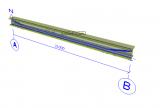
Working with the prestress checks
You work in the standard SCIA Engineer graphical user environment. After a successful calculation of a prestressed beam, you can easily perform the required checks for individual construction stages. Thus, the check can be performed for any time instant of the lifespan of the structure. For instance, the required reinforcement can be determined at the ultimate limit state. The calculation of longitudinal reinforcement takes into consideration the user-defined tendons/strands and soft steel reinforcement.
All data are clearly displayed. The check of the cross-section (strain, stress, force) has its own tab-page for internal forces resulting from (1) prestressing (primary/secondary), (2) dead and (3) life load.
It is even possible to perform the check of individual tendons, strands, reinforcement bars or concrete fibres.
Aging of young concrete is properly applied in the model, i.e. the concrete strength and stiffness depends on the time of casting.
The loads, strains, stresses and internal forces for uniaxially and biaxially loaded cross-sections can be reviewed in a 2D or 3D graphical window.
Both initial and resultant state of the stresses, strains, etc. can be evaluated. The initial state is the state of the cross-section in which all dead loads including prestressing have been applied; the resultant state is the state of the cross-section in which all loads (dead and live loads including prestressing) have been applied. The operating stress in the prestressed tendons/strands is the stress including the losses due to creep, shrinkage, and relaxation. This analysis can be done according EN 1992-1-1 (buildings) or EN 1992-2 (bridges). Additionally, the losses due to elastic deformation are taken into account. Special arrangements have been done for precast concrete according chapter 10 of EC2.
The moment capacity of the whole beam can be calculated for the resultant vector moment of My and Mz - the moment around y-axis and z-axis respectively. This capacity can be easily compared to the governing forces.
The capacity of a single section can be checked using the interaction diagrams of N, My and Mz.
The allowable stresses are checked according to clause 5.10.2.2. The influence of environmental classes, soft steel reinforcement amount and location of the prestressing reinforcement can easily be verified for individual construction stages. The principal stresses can also be verified and checked acc. EC2.
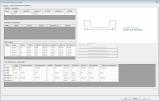
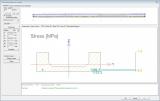
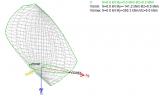
Summary
The module “prestress checks according to EN 1992” is an easy-to-use tool for engineers who need to check reinforced, prestressed beams according to the ultimate and serviceability limit states. There is no difference between uni-axial or bi-axial bending. All construction stages can easily be respected. The model takes into account the rheological aging (development of concrete strength and stiffness over time). The program operates easily and intuitively. The graphical output helps the engineer gain an insight and allows him to come to a more efficient design. The document bundles the calculation results and provides a sound and neat graphical output.
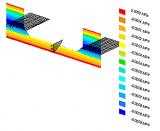

Required modules:
- sens.21

Want to try SCIA Engineer yourself?
Explore how our software and services can help you optimise your work and boost your productivity. Try it for yourself with a free 30-day software trial.
Download a free 30-days full trial